Will AI completely replace designers? Probably not yet.

One afternoon last week, I was talking to a product team about design collaboration. Behind us, a group of young people were also talking excitedly about the impact of AI on the internet today and the various opportunities that are emerging.
GPT is constantly evolving, and related products are emerging constantly. Design, as an essential branch in the field of AI, is also receiving a lot of attention. Is AI design viable? What impact and changes will there be for designers? These are the most discussed topics in the design field recently.
For the past two months, my research has turned to AI design and its relationship to designers in the future. In combination with the recent communication with some relevant companies in the field, I still have some of my own views and ideas, here to share with you.
Note: In this article, AI design specifically refers to the application of AI in interface design. Illustration, CG, and other graphic design are not within the scope of this discussion.

First, let me share some opinions and judgments:
The application of AI in design is exciting, but currently it only demonstrates the possibility rather than feasibility or certainty. There is still a long way to go from possibility to commercialization.
Therefore, I would like to share my own opinions and judgments, and you can continue reading with this information in mind.
- It will take at least one year, or even longer, for AI technology to truly enter interface design work.
- Design systems will become more fundamental with the help of AI, but their value will also become more explicit.
- The quality of AI design tools in the future will largely depend on the quality of experience and rules.
- AI will have an impact on many basic and repetitive design work, but it won’t happen immediately, and it will happen within the next two years.
- The evolution of designer positions will accelerate, more architectural designer and product designer will emerge within the next two years.
Some possible cases and principles:
In the past six months, there have been many new AI-based products and tools in the design field. Simply input a text description or take a hand-drawn wireframe, click and send, a complete interface design draft, even the code, is done for you.
It looks very exciting, but upon closer analysis, you will find that they did not suddenly appear before you. Here we can analyze the existing AI interface design ideas through several cases.
01. Galileo AI
Galileo AI is an AI design tool that has been mentioned by many people recently. By providing a brief description, it can generate a corresponding UI interface. Galileo will provide interface design solutions based on the user’s description and the built-in “library” of the system.
for example: Anonboarding screenfor adog walking app
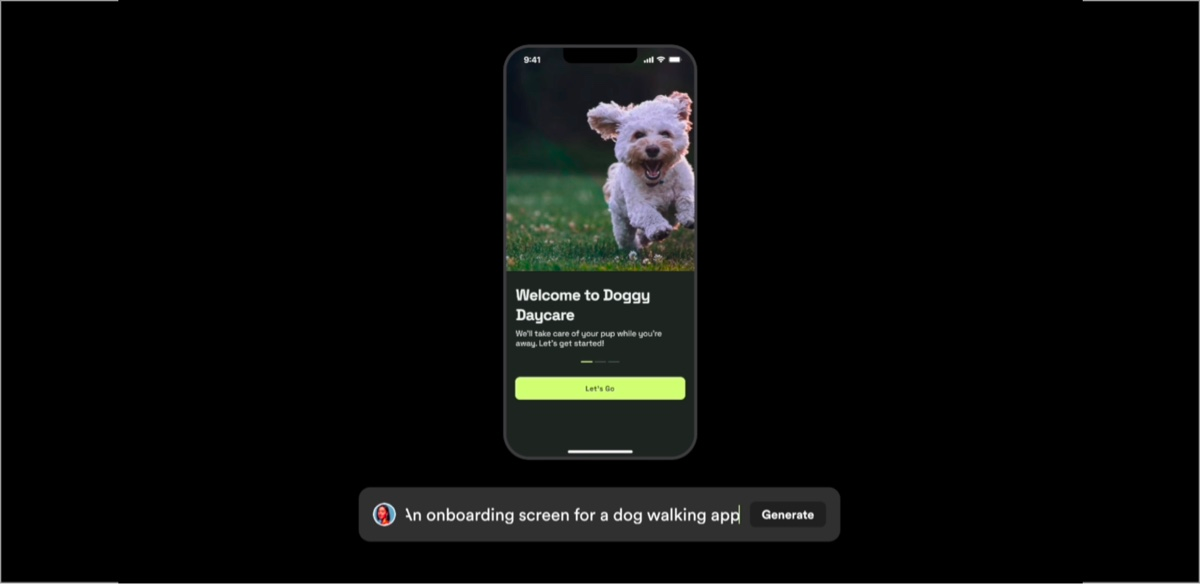
02. Uizard
Compared to Galileo AI, Uizard has taken a step further and can generate a set of pages based on text descriptions. For example, for this pet vegetarian application below, you can still input a description, but the difference is that the system generates a set of design solutions such as product lists, details, shopping and payment.
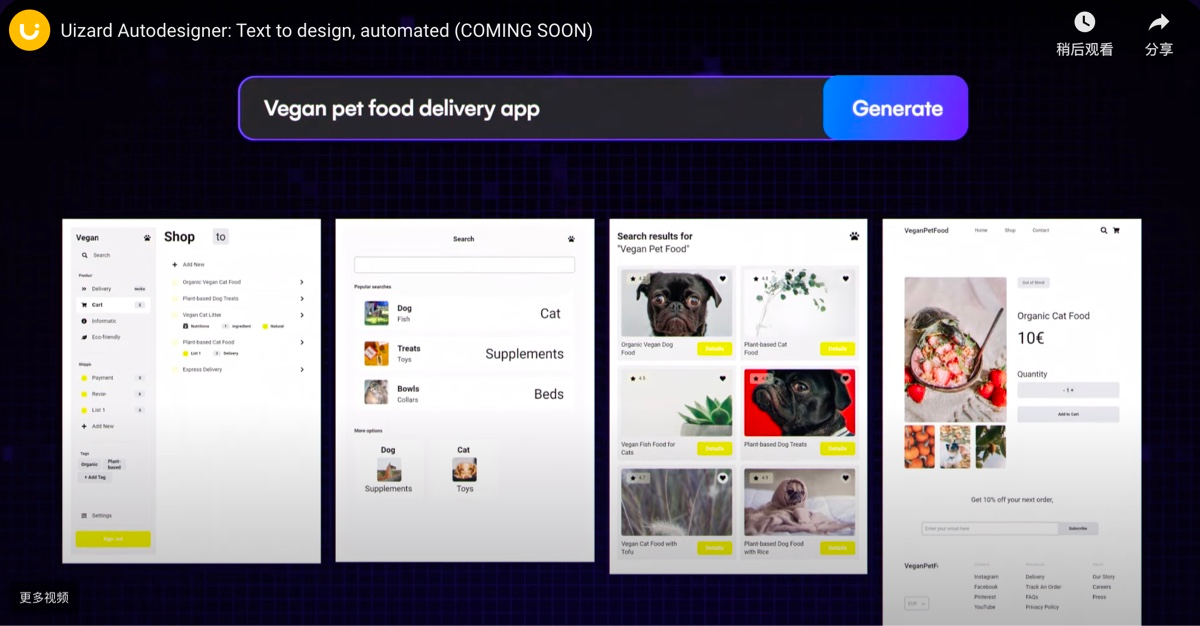
When we analyze the input information of the two demos, we will find two key pieces of information:
The type of interface
The keywords “Onboarding page” and “Delivery app” mentioned in the two cases allow the AI to understand what type of interface the user needs.
The type of product
The keywords dog walking app and vegan pet food mentioned in the two cases enable the AI to further understand what type of product the user needs, as well as the commonly used copy information and interface style of such products.
Taking Galileo’s dog walking app as an example, the system can quickly produce the interface that users need by analyzing the two key attributes of “interface type” and “product type” and selecting matching templates and materials for splicing.
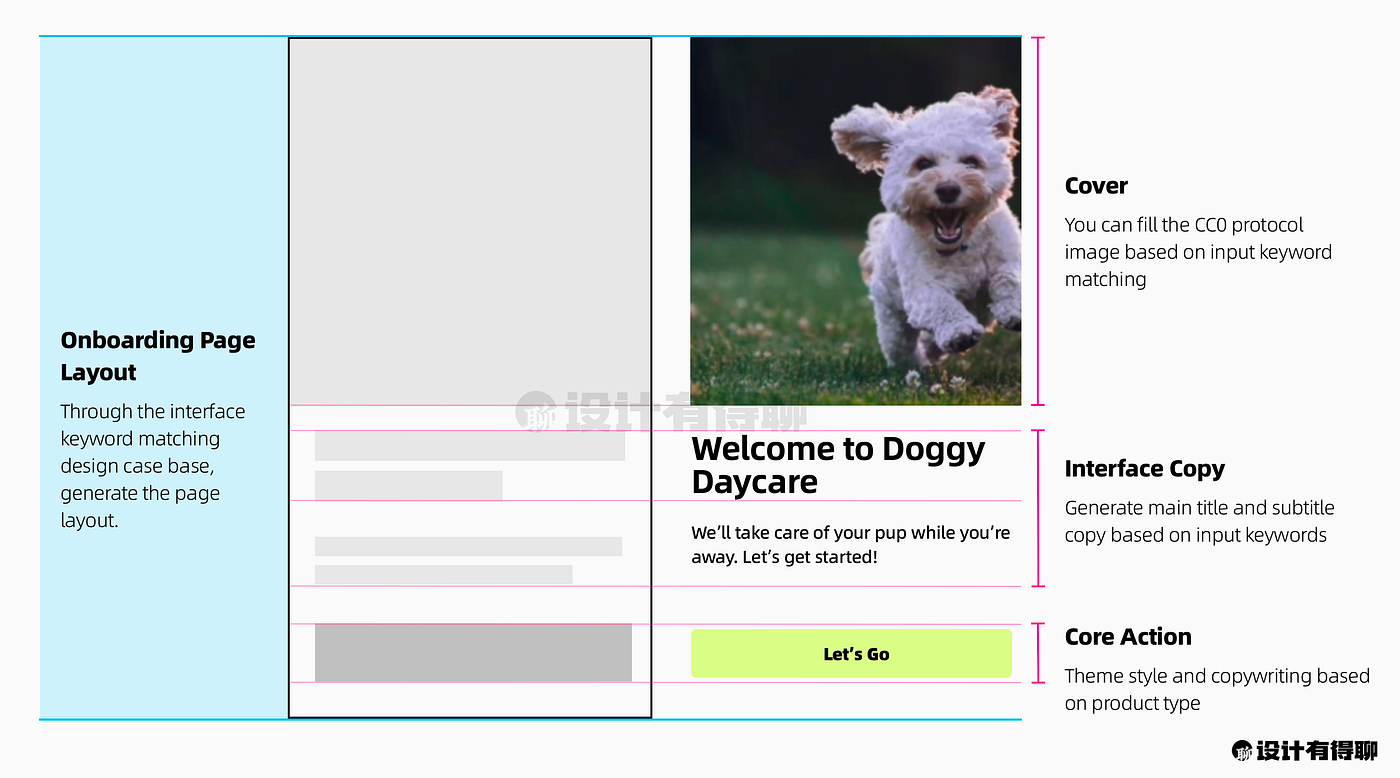
The core principle of these AI design tools lies in the introduction of a “case library”, which provides AI with a set of industry attributes and general design rules.
As internet product design has developed, interface design has become highly typified and patterned. We can extract design rules from a large number of case libraries and “drafts”, and it is thanks to the powerful processing capabilities of GPT that AI interface design has become possible.
This is also why we can input a piece of text and get a decent-looking interface design.
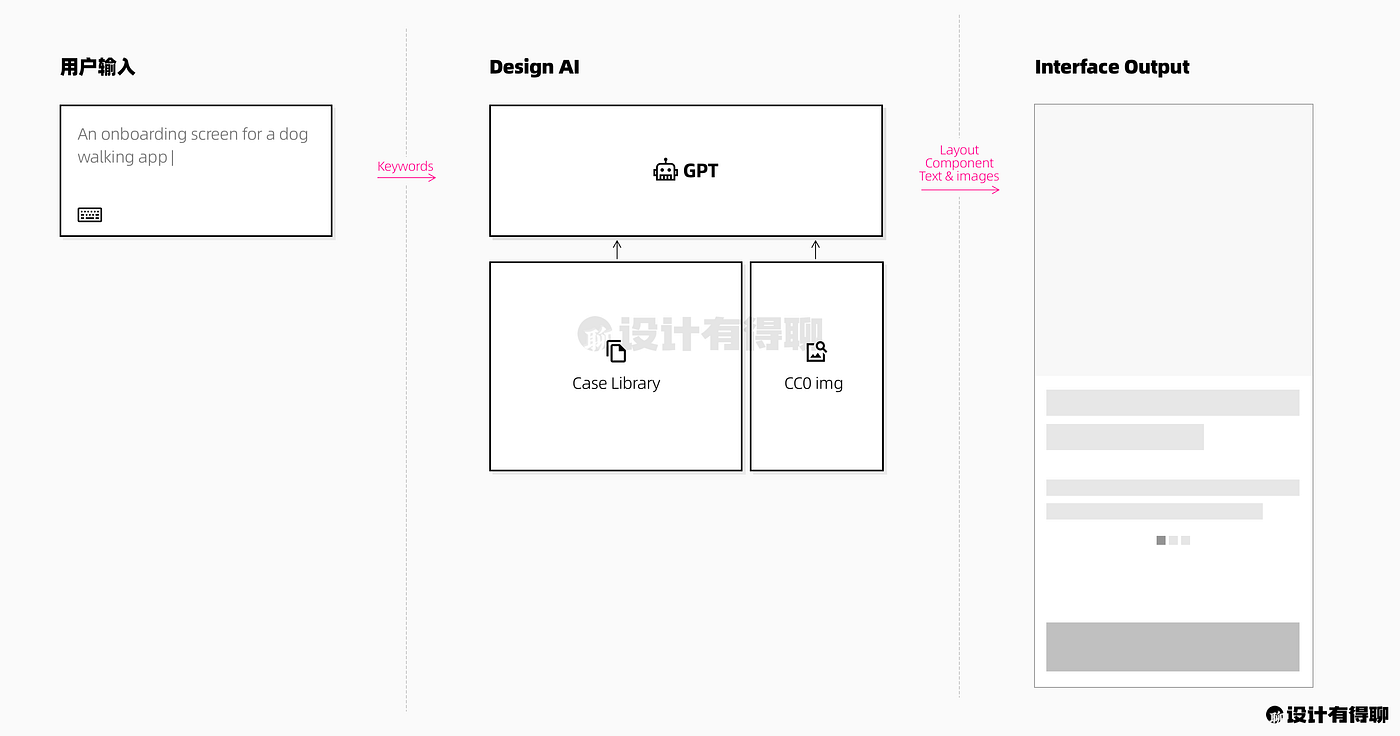
03. GPT 4
Recently released GPT 4 now supports image input and can even directly convert wireframes into HTML code. Although the demo is simple, it proves that AI can help users complete the entire process from wireframe to code.

Compared to the previous two “Text-to-Image” products, GPT 4 not only has a case library, but also adds code modules that match with it. Students who have read the previous design system series articles should have already discovered that this is actually due to the support of a complete design system.
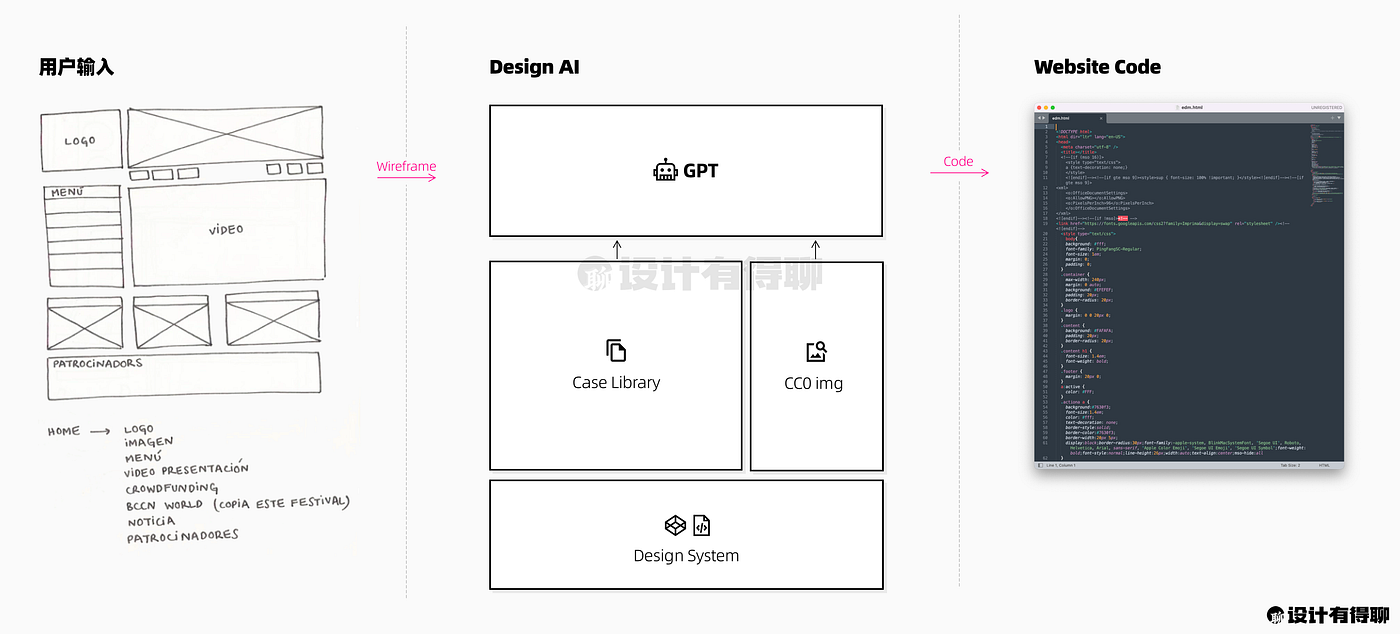
Whether it’s Material Design, BootStrap or AntDesign, all can easily handle this task. This is also why I mentioned earlier that design systems will become more fundamental because of AI design, but their value will also become more explicit.
To sum up:
The core of existing AI interface design tools lies in the four steps of requirement input → requirement analysis → rule matching → result output. Input, analysis, and output have become the basic infrastructure capabilities of AI, and the quality of rules will affect the service ability and quality of an AI design tool.
With this basic understanding, the logic behind AI tools such as AI resume writing and AI PPT becomes easy to understand. The only differences are the industry, case library, and rules.
Will AI completely replace designers? Probably not yet.
As we have mentioned before, with the current product capabilities, AI interface design is still in the phase of demonstrating its potential, and it is still some distance away from being commercially available. The key lies in whether the case library and design rules can support design work in business.
The case library we have today comes mainly from various product screenshots and sketches. They lack input from business and requirements, as well as data validation, let alone abstracting specific design rules from them.
Using them as an exploration and inspiration in the early stages is possible, but I believe no demand side would agree to directly involve them in designing business requirements.
Of course, we still see some feasible cases.
In addition to the design-focused tool products mentioned above, there are actually many other companies in various fields that are also trying AI design. Their goals are more specific, which is to solve design problems in a particular field or business.
01. Flipboard
The use of AI for interface design can actually be traced back to around 2014, when the famous electronic magazine application Flipboard launched the Duplo layout engine.
Due to the layout challenges brought about by the rapid development of mobile devices, Flipboard upgraded Duplo based on the original Page layout engine. Compared to the 20 layouts that Pages can provide, Duplo uses AI algorithms to directly increase the layout possibilities to a terrifying 6,000.
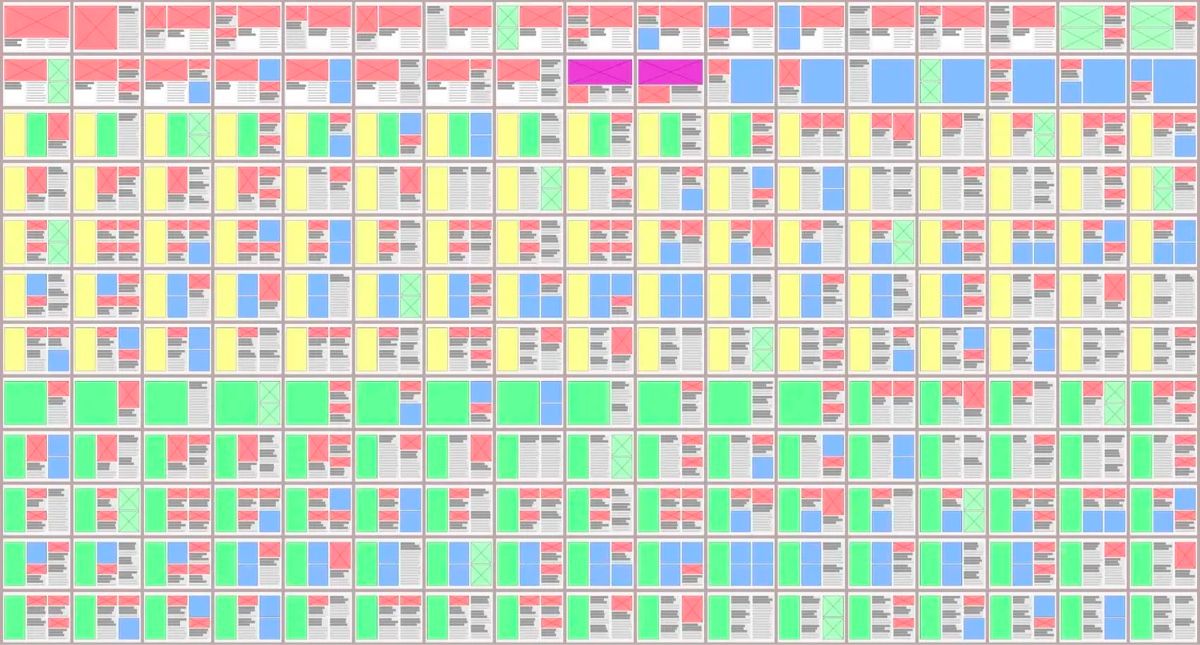
At the same time, Duplo will further optimize by inputting designer’s expert experience and validating data, and combining them into larger layout modules for client-side rendering.
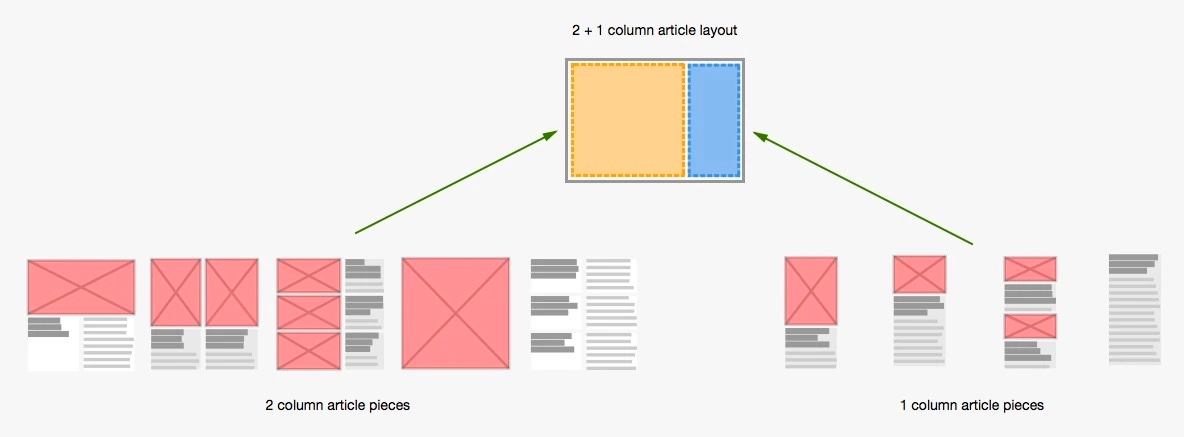
Thanks to the powerful capabilities of Duplo, we can achieve an amazing reading experience on any device size and with any type of content.
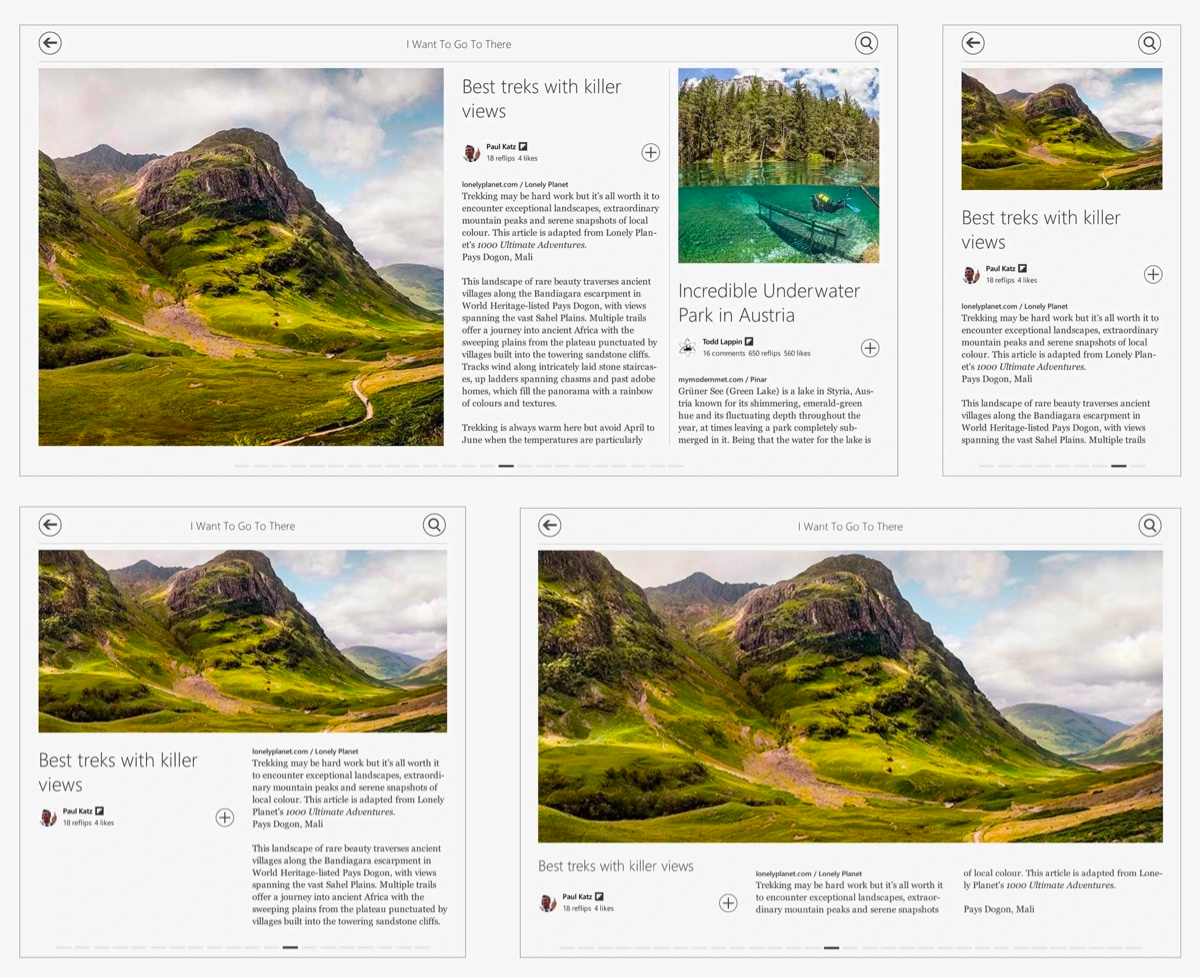
02. Airbnb
GPT-4 is not the first to convert wireframes into interface code. Airbnb’s design team had already tried it five years ago. By scanning wireframes, AI can help designers complete the conversion of engineering prototypes.
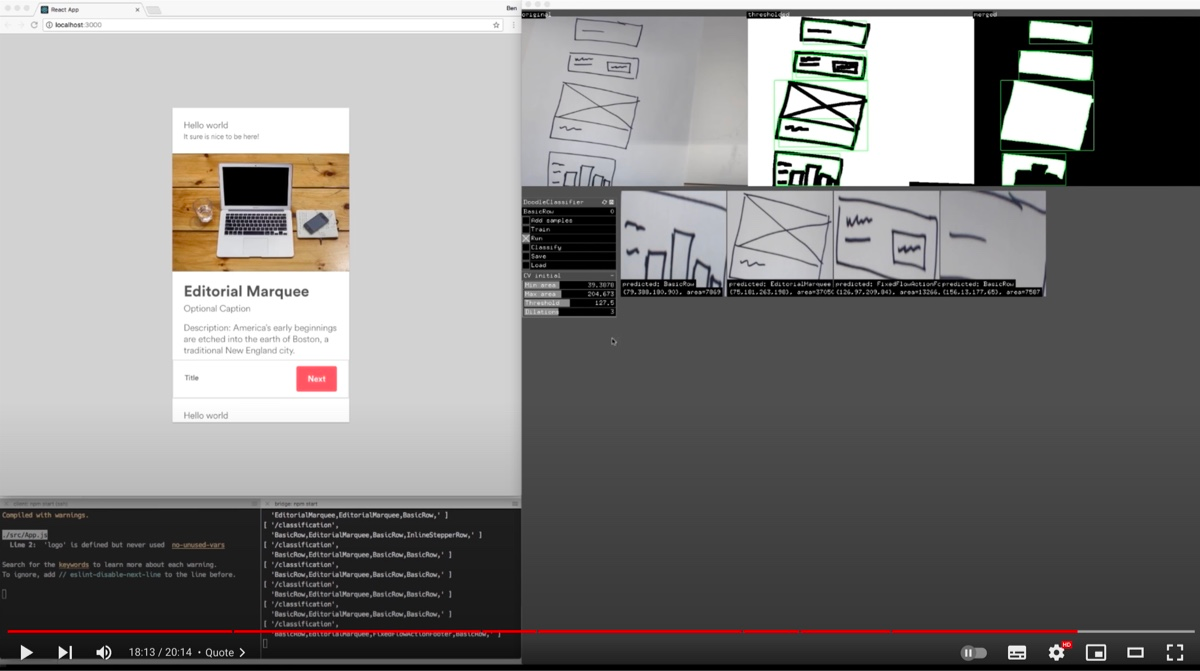
Compared to GPT 4, the feasibility of Airbnb’s solution is extremely high. Airbnb has a very comprehensive design system, with each module corresponding to a design and code. From recognizing wireframes to matching design rules to generating code, the entire process can directly enter the business production process.
03. Salesforce Einstein GPT
Just a few days before the release of GPT 4, Salesforce also released its own GPT product — Einstein. Maybe because of its industry characteristics, or maybe because the voices of several big companies are too loud, Salesforce’s release did not attract too much attention.
Strictly speaking, Einstein GPT is not a design tool, but in my current observation, it is currently the best product that combines AI design with business.
Einstein’s design function is “buried” in the product, and you can summon an AI assistant to create a page by describing it with a piece of text. For example, the form page below.
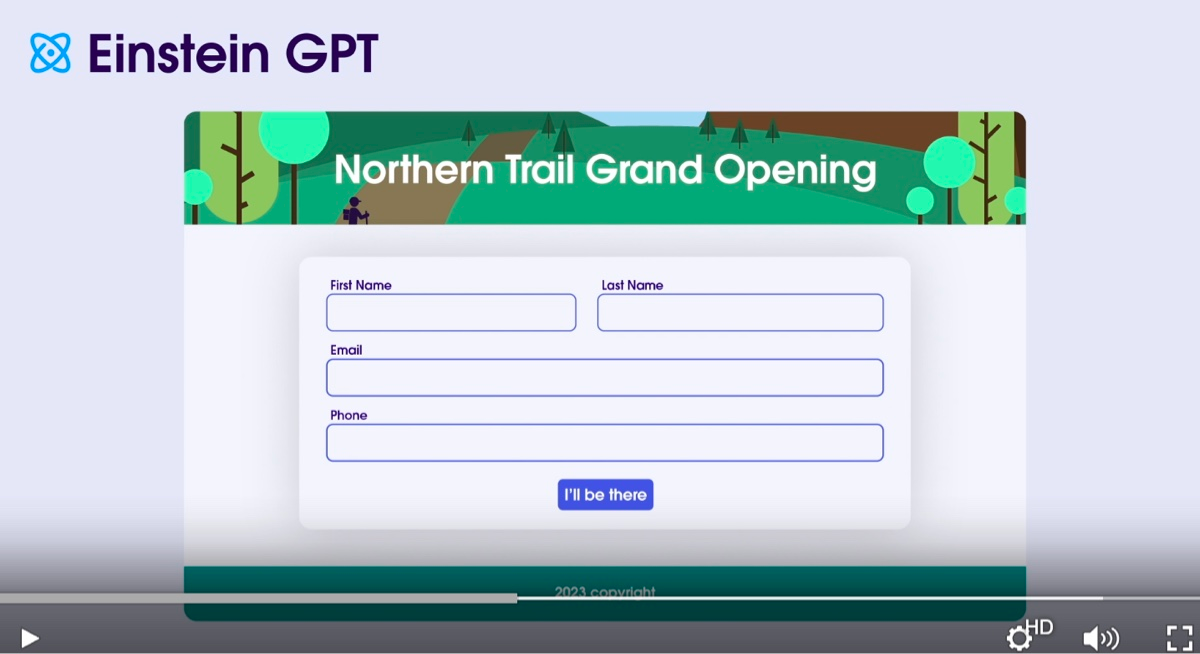
Like Airbnb, Salesforce has a very comprehensive design system — Lightning Design, which allows users to easily create an application interface based on business characteristics. It is not just a design draft, but a product function that has been developed and can interact with users.
Compared to the previous products, Einstein takes design further into the workflow. This form interface produced through AI can be directly published online, and the collected data can also be directly entered into the business database.
This is also the most exciting aspect of Einstein GPT, which truly integrates AI capabilities into the product. Whether it is design or text processing, the goal is to directly participate in business production and help users efficiently complete their work.
Speaking of which, we have to mention two products, DingTalk and Feishu. As far as I am concerned, both companies have a complete business-level design system and a large amount of interface design needs. Moreover, DingTalk already has two product capabilities, Cool Apps and Yida, which are very suitable for combining their GPT capabilities with AI interface design.
Therefore, in Chinese I am also looking forward to the actions of these two products in this area. I want to see what they will do in the AI direction in subsequent product research and development. Salesforce’s Einstein GPT is a very good direction.
The Prerequisites for Successful AI Interface Design Tools
How to define the success of AI page design? The core evaluation criteria are still quality and efficiency. That is, in a specific field or business, the completed quality meets the general standards of designers, and the completed efficiency far exceeds that of designers. At the same time, it also needs to have clear commercial value and customers willing to pay for it.
To achieve this goal, I believe that the following four prerequisites must be met:

01. Enterprise-level or Domain-level AI
The learning of existing AI is based on general models and data, so the solutions it can provide are only possibilities.
To truly provide deterministic solutions for business, it is necessary to continuously learn and evolve by combining industry knowledge, business characteristics, and data. Ultimately, a group of AI designers who understand the business and are professional can be trained.
02. Design Standards and Expert Experience Input
Clear design standards and rules are the most important foundation for AI tools to participate in business production. In this process, the value of domain-level design systems and business-level design systems will be further magnified, and people no longer have to worry about how to measure the value of design systems.
03. Clear Market Demand
Whether it is Flipboard or Salesforce, they are trying to solve the conflict between demand volume and production cost (efficiency). Only with clear market demand can AI design tools have the possibility of creating value.
04. Integration into Production Processes
Design is just a part of the entire business production process. Simply changing the design process alone cannot maximize the value of AI. Only by integrating AI design capabilities into the business production process, like Salesforce does, can its true value be realized and cost-effectiveness achieved.
Based on these premises, most existing AI interface design tools still have a long way to go before they can succeed. Instead, companies that experiment with AI design in specific businesses have already begun to create value with AI.
Therefore, in my opinion, the development of AI design tools should not follow the path of general tools, but rather should continue to develop closely with a certain field or specific business.
AI design tools are developing rapidly overseas, but it seems that there is not much movement in China?
In fact, I have had the opportunity to communicate with several companies that design products recently, and everyone is still objectively and calmly looking for the true value of AI design. I believe that it won’t be long before some products appear, but I won’t spoil it here. Let’s wait and see.
Returning to the topic of AI interface design, in fact, we have made some attempts at Alibaba in the earlier years, including marketing-oriented and B-end attempts, which were generally successful. It is these attempts that have convinced me of the long-term value of design systems, and we have continued to invest resources in building the middle platform capabilities of design systems in the following years.
In future articles, I will combine several cases to share with you some of our attempts in intelligent design over the years, as well as my thoughts on the feasibility of design systems and AI interface design.
Follow me to get more articles about design systems, AI design, UX design, and more in the future. 🙌
Thank you for reading. Welcome to subscribe me if you're interested in these topics.
📦 My Work
- Gumroad: https://gumroad.com/5key
💌 Contact
- Twitter: https://twitter.com/designchathub
- Linkedin: https://www.linkedin.com/in/fivekey
- Email: designchathub#gmail.com



Member discussion